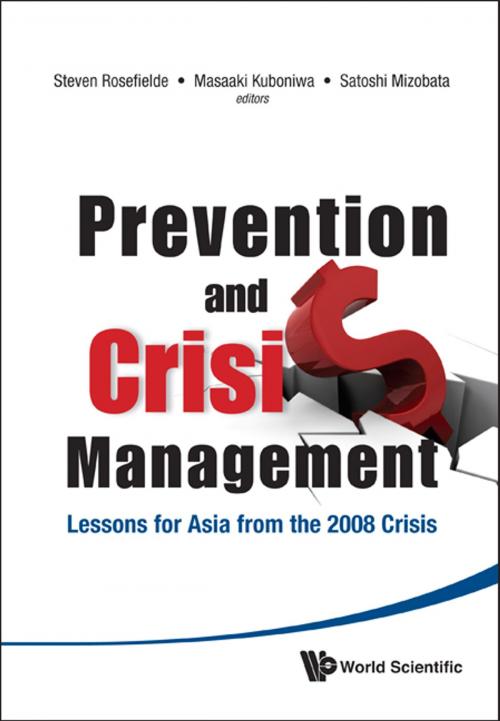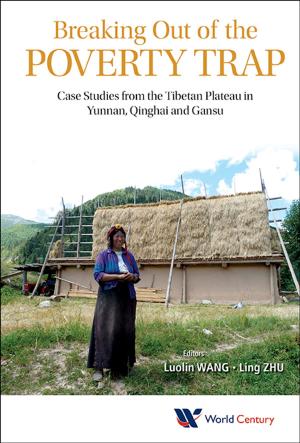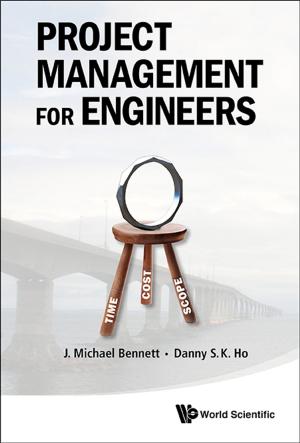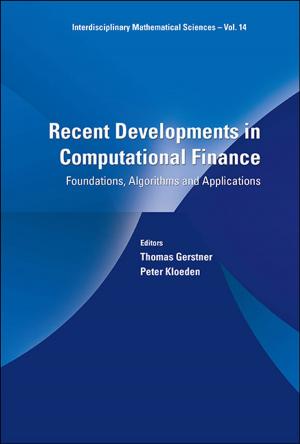Prevention and Crisis Management
Lessons for Asia from the 2008 Crisis
Business & Finance, Economics, International Economics, Macroeconomics| Author: | Steven Rosefielde, Masaaki Kuboniwa, Satoshi Mizobata | ISBN: | 9789814483933 |
| Publisher: | World Scientific Publishing Company | Publication: | January 9, 2013 |
| Imprint: | WSPC | Language: | English |
| Author: | Steven Rosefielde, Masaaki Kuboniwa, Satoshi Mizobata |
| ISBN: | 9789814483933 |
| Publisher: | World Scientific Publishing Company |
| Publication: | January 9, 2013 |
| Imprint: | WSPC |
| Language: | English |
Four years have passed since the onset of the 2008 global crisis, and although some believe that there may be a second down draft soon, attention has shifted from crisis narration to assessing lessons essential for preventing or managing recurrences. The exercise is worthy, but there is always the danger of preparing for the last war when the next attack takes another form. Prevention and Crisis Management addresses this problem by highlighting the future threat to Asia from a broader perspective that takes account of the Japanese and Asian financial crises during the 1990s as well as the global crisis of 2008. The enlarged framework turns out to be illuminating for two distinct reasons. First, it reveals that Asian crises take many diverse forms, and second, the solutions devised to date have only been locally and not universally effective. Policymakers are accordingly advised to always plan for the element of surprise.
Contents:
-
Crises 1990–2010:
- Asian Currency and Financial Crises in the 1990s (Steven Rosefielde and Assaf Razin)
- The 2008–2009 Global Crisis (Steven Rosefielde and Assaf Razin)
- Crisis in Transitioning Countries (Yoji Koyama)
- PIIGS (Steven Rosefielde and Assaf Razin)
- Global Default (Steven Rosefielde and Daniel Quinn Mills)
-
Prevention:
- Prevention and Counter-Measures (Torbjörn Becker)
-
Threats and Deterrents:
- Global Imbalances (Huan Zhou and Steven Rosefielde)
- Chinese Protectionism (Jonathan Leightner)
- China's Economic Future (Akio Kawato)
- Optimal Asian Dollar Surplus (Eric Fisher)
- Toward an East Asian Economic Community (Yun Chen and Ken Morita)
- Asian Union (Steven Rosefielde, Jong-Rong Chen and Masumi Hakogi)
- Buddhist Crisis Prevention and Management (Teerana Bhongmakapat)
Readership: Researchers, academics, graduates and general public who are interested in Asian economies, globalization, macroeconomics and international economics.
Key Features:
- The book should stand out from the rest of the pack because of its timeliness, authoritativeness, focus and scope
- The book rests on the latest research of the Stockholm Institute for Transition Economies, and Asian scholars participating in a Japan Foundation sponsored project on the 2008 global financial crisis
- Although, there is a growing awareness that another global economic crisis is brewing, there is little authoritiative, Asian focused research published on prevention and crisis management in the new era
- The book will scrutinize the EU's failings to assess whether an AU(Asian Union) is more likely to help or hinder prevention and crisis management
Four years have passed since the onset of the 2008 global crisis, and although some believe that there may be a second down draft soon, attention has shifted from crisis narration to assessing lessons essential for preventing or managing recurrences. The exercise is worthy, but there is always the danger of preparing for the last war when the next attack takes another form. Prevention and Crisis Management addresses this problem by highlighting the future threat to Asia from a broader perspective that takes account of the Japanese and Asian financial crises during the 1990s as well as the global crisis of 2008. The enlarged framework turns out to be illuminating for two distinct reasons. First, it reveals that Asian crises take many diverse forms, and second, the solutions devised to date have only been locally and not universally effective. Policymakers are accordingly advised to always plan for the element of surprise.
Contents:
-
Crises 1990–2010:
- Asian Currency and Financial Crises in the 1990s (Steven Rosefielde and Assaf Razin)
- The 2008–2009 Global Crisis (Steven Rosefielde and Assaf Razin)
- Crisis in Transitioning Countries (Yoji Koyama)
- PIIGS (Steven Rosefielde and Assaf Razin)
- Global Default (Steven Rosefielde and Daniel Quinn Mills)
-
Prevention:
- Prevention and Counter-Measures (Torbjörn Becker)
-
Threats and Deterrents:
- Global Imbalances (Huan Zhou and Steven Rosefielde)
- Chinese Protectionism (Jonathan Leightner)
- China's Economic Future (Akio Kawato)
- Optimal Asian Dollar Surplus (Eric Fisher)
- Toward an East Asian Economic Community (Yun Chen and Ken Morita)
- Asian Union (Steven Rosefielde, Jong-Rong Chen and Masumi Hakogi)
- Buddhist Crisis Prevention and Management (Teerana Bhongmakapat)
Readership: Researchers, academics, graduates and general public who are interested in Asian economies, globalization, macroeconomics and international economics.
Key Features:
- The book should stand out from the rest of the pack because of its timeliness, authoritativeness, focus and scope
- The book rests on the latest research of the Stockholm Institute for Transition Economies, and Asian scholars participating in a Japan Foundation sponsored project on the 2008 global financial crisis
- Although, there is a growing awareness that another global economic crisis is brewing, there is little authoritiative, Asian focused research published on prevention and crisis management in the new era
- The book will scrutinize the EU's failings to assess whether an AU(Asian Union) is more likely to help or hinder prevention and crisis management















